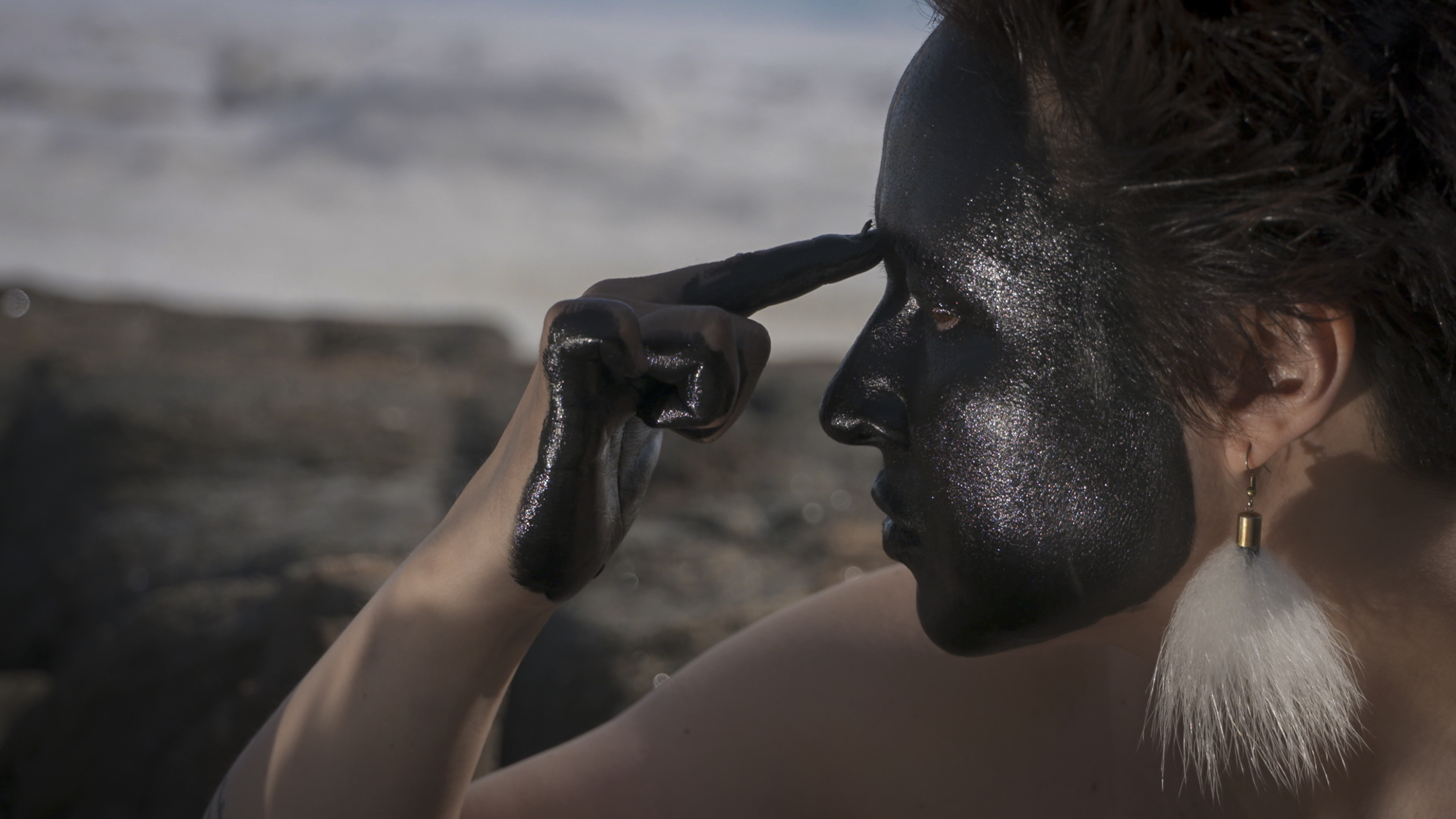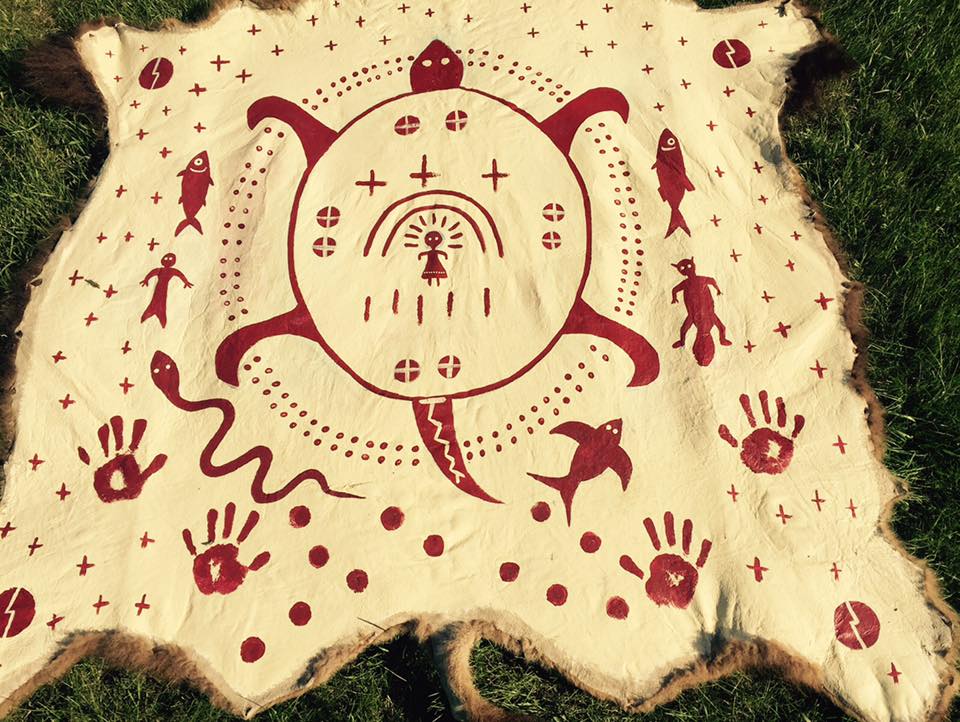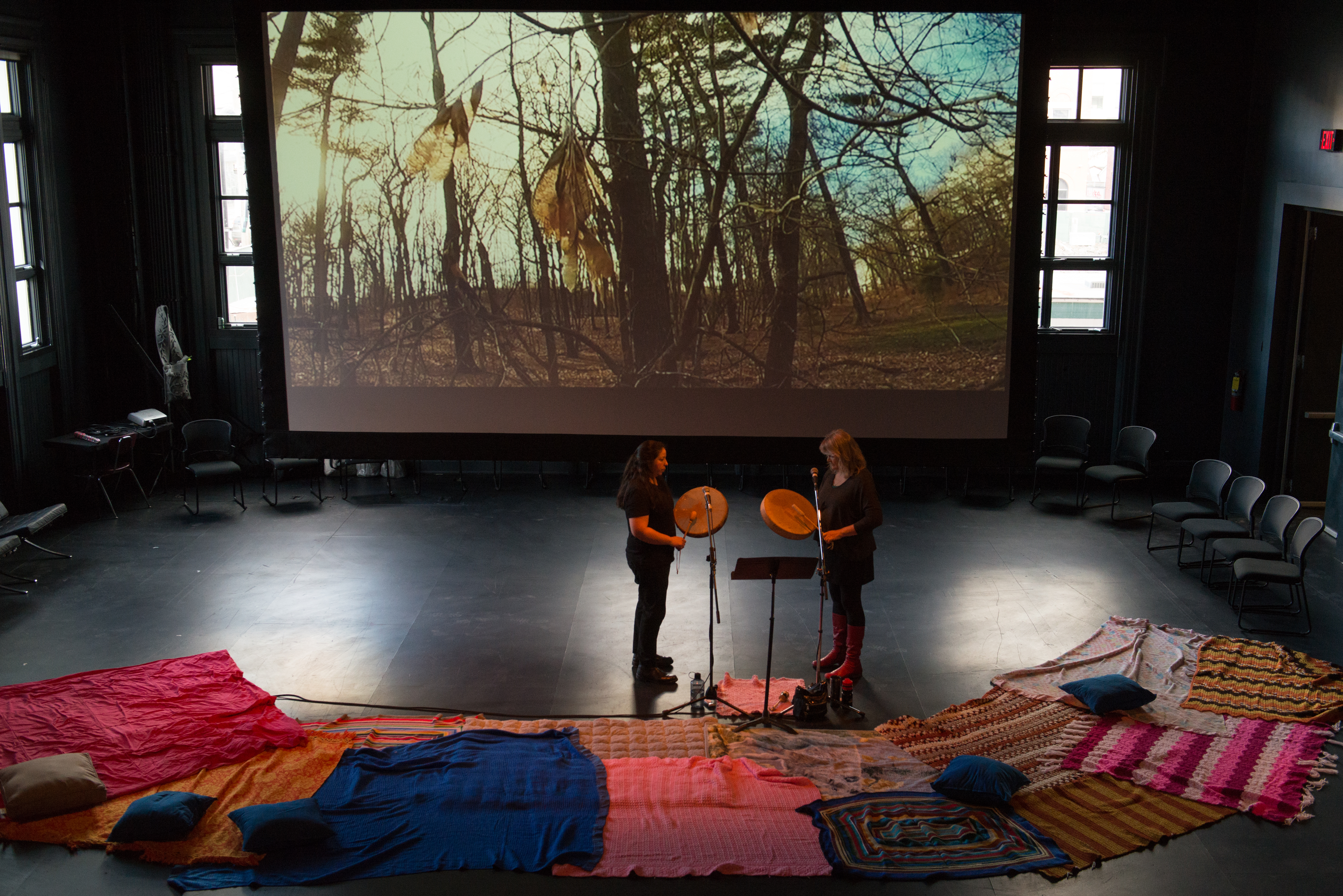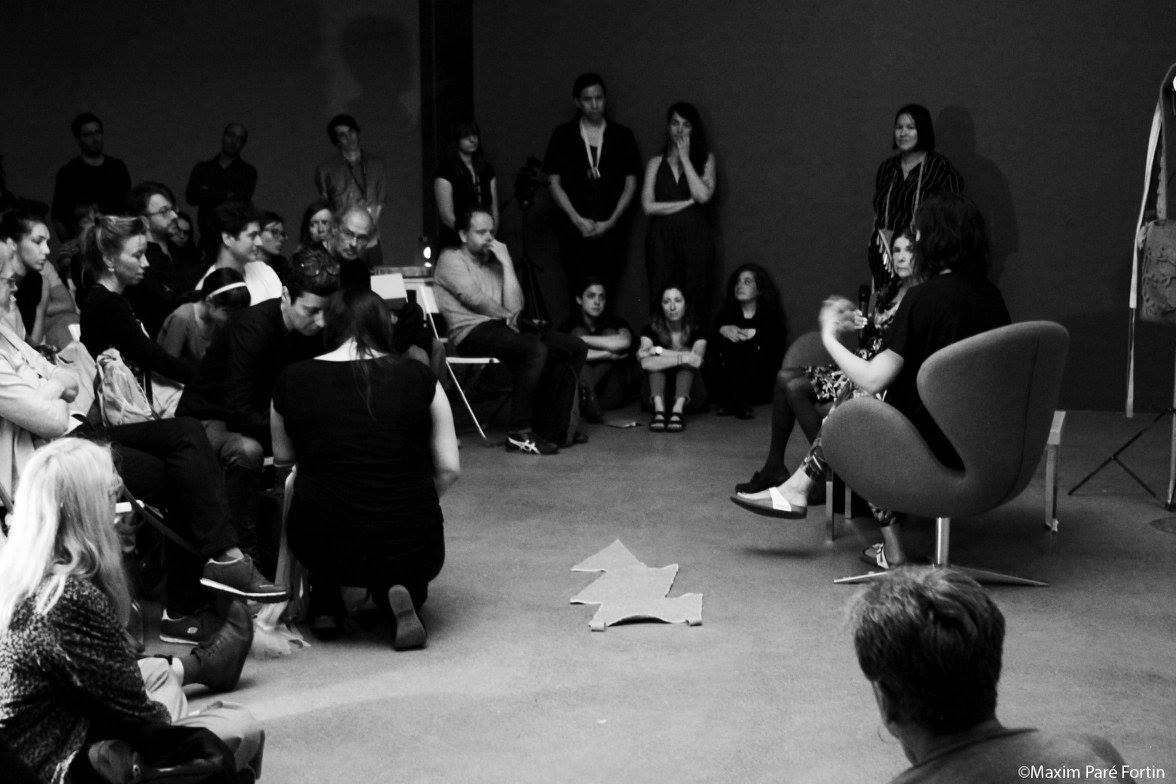
Laakkuluk Williamson-Bathory. Timiga nunalu, sikulu (My body, the land and the ice), 2016. Video (still), 6:28. Video: Jamie Griffiths. Music: Chris Coleman featuring vocals by Celina Kalluk. Courtesy of the artist.
grunt gallery is an artist-run center in Vancouver, founded in 1984 with the mandate to support often isolated artists by providing the resources to exhibit work that might otherwise go unrecognized. After more than thirty years, I have found a place as a curator within this organization that has fostered critical and generative discourse on contemporary art in Canada, including significant work with LGBTQ2 and BIPOC artists and communities, performance art, social practice, web projects, and an active engagement with the archives of such communities.
Grounded within this extensive history, #callresponse is a project I co-organized with artists Maria Hupfield and Tania Willard in partnership with grunt. With commissions by Indigenous women and artists who span the country from west to east and from north to south (as far as Brooklyn, New York), the project is geographically expansive yet brought together in the physical space of the gallery and the virtual space of the Internet.1

Christi Belcourt and Isaac Murdoch. Reconciliation with the Land and Waters, 2016. Acrylic on buffalo robe. Buffalo robe gifted to Onaman Collective by Grand Chief Derek Nepinak. Photo: Christi Belcourt. Courtesy of the artists.
#callresponse grew out of collective discussions about the important role of Indigenous feminism in grounding our lives and work in reciprocal relations while critiquing and refusing the intersections of colonialism and patriarchy. This includes work with other humans, nonhuman living beings, and territory beyond narrow concepts such as land. We desire to make art useful and make useful art and, at the same time, to respond to re/conciliation without necessarily centering this idea.2
Indigenous languages, oral narratives, songs, ceremonies, and land-based knowledge become hashtags in how they recall and accrue embodied knowledge. These venerable technologies move in ways that are intimate, attentive, specific, and responsible. Recognizing the fundamental shifts that can occur when the intersections of gender, race, and colonialism are considered seriously as the locus of systemic and symbolic violence, #callresponse uses the hashtag as a device to give voice to the importance of Indigenous North American women in creating a more equitable, just, and balanced future. The intention of #callresponse is to populate as many spaces and media with the hashtag as possible, in order to broadcast the message and to catalyze reactions.

Ursula Johnson with Cheryl L’Hirondelle. Nikamon Ochi Askiy (Ke’tapekiaq Ma’qimikew): The Land Sings, FADO Performance Art Centre, 2016. Photo: Henry Chan. Courtesy of the artist.
Strategically centering Indigenous women as vital presences across multiple platforms, #callresponse is a multifaceted project that includes a website, social-media platform, touring exhibition, and forthcoming catalogue. The project began with a series of local art commissions across Canada and in the United States, throughout 2016, and in dialogue with various publics. These initial commissions include Christi Belcourt (the North Shore of Lake Huron, Ontario), Maria Hupfield (Toronto, Montreal, New York City, and Vancouver), Ursula Johnson (Toronto and Vancouver), Tania Willard (Secwepemc Territory, British Columbia), and Laakkuluk Williamson-Bathory (Iqaluit in Nunavut, and Vancouver). Each artist has invited a guest to respond to her work, including Isaac Murdoch, IV Castellanos and Esther Neff, Cheryl L’Hirondelle, and Marcia Crosby. Representations of each commission along with contributions by the guest respondents are included in the exhibition.
The project focuses on forms of performance, process, and translation that incite dialogue and catalyze action between individuals, communities, territories, and institutions. An online platform utilizing the hashtag #callresponse on social media (Twitter, Instagram, Facebook) connects the geographically diverse sites and provides opportunities for networked exchanges. As both a title and hashtag, #callresponse draws from activist movements and campaigns—such as #IdleNoMore, #BlackLivesMatter, #MMIW, and #ReMatriate—that utilize social media to generate awareness, discussion, and action around important cultural, economic, environmental, political, and social-justice issues facing marginalized communities.

Maria Hupfield. Post Performance / Conversation Action, Galerie del’UQAM, 2016. Photo: Maxim Paré-Fortin. Courtesy of the artist.
#callresponse does not privilege re/conciliation as central to the work and lives of Indigenous women but rather reorients the vital presence of Indigenous women—their work and their embodied experiences—as central, as defining, and as preexisting the current appeals for a reconcilable future. The project acknowledges how artists are already working to complicate and unsettle the status quo, following Audra Simpson’s call that our “day to day lives be critically engaged” with an “ongoing, active attention to what is before us and a continuing care and vigilance over each other.”3 Traversing places where they live and work in various roles and responsibilities, the artists ground their works across the communities of significance—both urban and rural, online and in real life—through which they move.
1. I am grateful to Lee Plested’s invitation to expand the digital reach of the project to new audiences.
2. I choose the formulation re/conciliation over reconciliation to disrupt the reader’s recognition of the latter, as it connotes the official narratives of the Truth and Reconciliation Commission (TRC).
3. Audra Simpson, “Reconciliation and its Discontents: Settler Governance in an Age of Sorrow,” presentation, University of Saskatchewan, March 2016.



